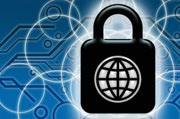Password Management: Idiot-Proof Tips
Posted: November 09, 2011
Only an alphanumeric string stands between a hacker and your bank account. Here's how to make sure your passwords are safe.
Only an alphanumeric string stands between a hacker and your bank account. Here's how to make sure your passwords are safe.
 Before the Internet, passwords played only a tiny role in everyday life. Think about it: Except for your ATM PIN, what important codes did you need to remember? Probably none. But now, you can’t click a link without hitting another site that requires a password. Doesn’t matter if it’s a big-name destination like Google Docs or Mint.com, or a smaller, more private site such as your local library or company intranet. You want in? Password, please.
Before the Internet, passwords played only a tiny role in everyday life. Think about it: Except for your ATM PIN, what important codes did you need to remember? Probably none. But now, you can’t click a link without hitting another site that requires a password. Doesn’t matter if it’s a big-name destination like Google Docs or Mint.com, or a smaller, more private site such as your local library or company intranet. You want in? Password, please.
For most users, this poses two huge challenges: to create hacker-proof but easy-to-remember passwords, and to manage them in a secure, convenient way. (Because, let’s face it, you’ll never remember them all. Some kind of organization is essential.)
It is precisely because of these obstacles that most users do a poor job of wrangling passwords. Fortunately, it’s not difficult to change your security-challenged ways. For starters, let’s take a look at what constitutes a safe password.
The Good 'Word
Last year, hackers made off with--and then posted online--hundreds of thousands of user passwords from popular Gawker websites like Gizmodo and Lifehacker. The Wall Street Journal analyzed those passwords and discovered that the most popular ones were barely passwords at all:
- 123456
- password
- 12345678
- lifehack
- qwerty
For shame, people, for shame. And it gets worse: In a 2009 survey, security firm Sophos determined that one-third of all users employ the same password for everything they do online. That means that if hackers get your password for one site, they’ve got it for all the other sites you use.
So it’s critical to use a different password for each and every site you visit. And because hackers employ special password-cracking software to guess their way into your accounts, you can’t just use “123456.” Or the dog’s name. (That sound you hear is a hacker laughing all the way to your bank.)
So what constitutes a secure password, and how can you come up with a good one for each of your online destinations? You have two options: automated and manual. Let’s start with the latter.
Do-It-Yourself Passwords
The longer your password, the better. Most sites require at least six characters, but if you can stretch it out to 10 or 12, you’ll raise its level of protection by several orders of magnitude. (More characters means more possible combinations, making it harder to crack.)
Also key: a combination of upper- and lower-case letters, at least one number, and, if the system allows, a symbol. So, for example, while you know that the word “password” makes a terrible password, you could vastly improve it by capitalizing the “p,” replacing a few of the letters with numbers, and tacking on a symbol. Here’s how that might look: P4ssw0rd#
[caption id="attachment_9170" align="alignleft" width="180"] Microsoft Password Checker. Click for full-size image.[/caption]Of course, that doesn’t remedy the need to have different passwords for different sites. One viable method is to start with the name of the site, and then build a password around it. For example, for Netflix you could swap the “e” for a “3” and the “i" for a “1,” giving you N3tfl1x. Now you just need to personalize it: Tack on, say, your initials in the front and then reverse them at the end. Thus, my Netflix password might be (but most definitely is not) rbN3tfl1xbr.
Microsoft Password Checker. Click for full-size image.[/caption]Of course, that doesn’t remedy the need to have different passwords for different sites. One viable method is to start with the name of the site, and then build a password around it. For example, for Netflix you could swap the “e” for a “3” and the “i" for a “1,” giving you N3tfl1x. Now you just need to personalize it: Tack on, say, your initials in the front and then reverse them at the end. Thus, my Netflix password might be (but most definitely is not) rbN3tfl1xbr.
Using this same method for (as an example) PCWorld.com’s online forums, my password would be rbPCW0r1dbr. That’s 11 characters, including a mix of upper- and lower-case letters, plus a few numbers. Passwords don’t come much more impenetrable than that--at least according to Microsoft’s Password Checker, which provides a strength rating based on any test-password you type in. (Incidentally, Microsoft recommends passwords that are at least 14 characters long.)
What I like about this approach is that it’s fairly easy to remember. The name of the site, a few letter/number swaps, and my initials for the prefix and suffix.
That said, remembering your passwords is the other half of the battle. And that’s why some kind of automated solution can be a major help--especially if you want to manage and even transport your passwords, which can be very useful.
By Rick Broida, PCWorld